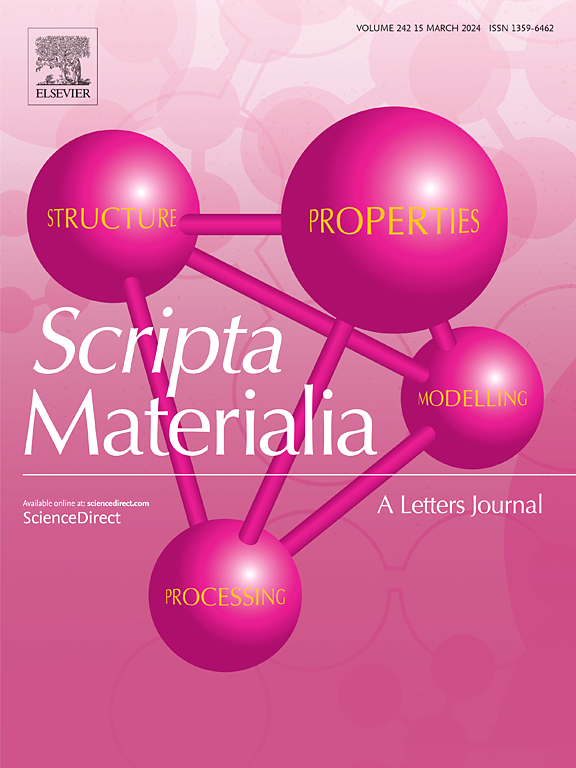Microstructure and electronic properties of the graphene/{111} copper interface modulated by the rotation angle
IF 5.3
2区 材料科学
Q2 MATERIALS SCIENCE, MULTIDISCIPLINARY
引用次数: 0
Abstract
Interfacial structure and characteristics of heterogeneous interfaces are essential for the macro-properties of composites. Particularly for graphene/metal heterojunctions, interface rotation angle variations may cause distinctions in interfacial electronic properties. However, direct experimental evidence is lacking in understanding the corresponding mechanisms. Here, we investigated influential mechanisms of rotation angle differences on interfacial electronic coupling in classical graphene/copper (Gr/Cu) immiscible epitaxial systems. Atomic force microscopy combined with surface potential measurement confirmed that the different rotation angles (∼8°) contributed to a modulated Fermi level in Gr/Cu, indicating varied electron transfer at the interface. Through theoretical analysis, it is found that the modulated interfacial electronic behavior is primarily ascribed to different overlap between C-p and Cu-3d orbitals, resulting from varying fluctuation of graphene and changed minimum Gr/Cu distance at different rotation angles. The mechanism of interfacial electronic properties modulated by the rotation angles could further guide the design of heterogeneous interfaces in electronic applications.

旋转角度调制石墨烯/{111}铜界面的微观结构和电子性能
界面结构和非均相界面的特性对复合材料的宏观性能至关重要。特别是对于石墨烯/金属异质结,界面旋转角度的变化可能会导致界面电子性能的差异。然而,缺乏直接的实验证据来理解相应的机制。在这里,我们研究了旋转角度差异对经典石墨烯/铜(Gr/Cu)非混相外延系统中界面电子耦合的影响机制。原子力显微镜结合表面电位测量证实,不同的旋转角度(~ 8°)导致Gr/Cu中的费米能级被调制,表明界面上的电子转移发生了变化。通过理论分析发现,界面电子行为的调制主要归因于C-p和Cu-3d轨道的不同重叠,这是由于石墨烯的波动变化和不同旋转角度下最小Gr/Cu距离的变化造成的。旋转角度对界面电子特性的调制机理可以进一步指导电子应用中异构界面的设计。
本文章由计算机程序翻译,如有差异,请以英文原文为准。
求助全文
约1分钟内获得全文
求助全文
来源期刊

Scripta Materialia
工程技术-材料科学:综合
CiteScore
11.40
自引率
5.00%
发文量
581
审稿时长
34 days
期刊介绍:
Scripta Materialia is a LETTERS journal of Acta Materialia, providing a forum for the rapid publication of short communications on the relationship between the structure and the properties of inorganic materials. The emphasis is on originality rather than incremental research. Short reports on the development of materials with novel or substantially improved properties are also welcomed. Emphasis is on either the functional or mechanical behavior of metals, ceramics and semiconductors at all length scales.
 求助内容:
求助内容: 应助结果提醒方式:
应助结果提醒方式:


